Jacobaea maritima
The trouble with dusty miller is finding something not to like about it.
It has a lovely hue, likes full sun, and doesn’t care to be watered too often. You can throw it in the garden or in a container, and it will sing its thanks with reliable silvery foliage.
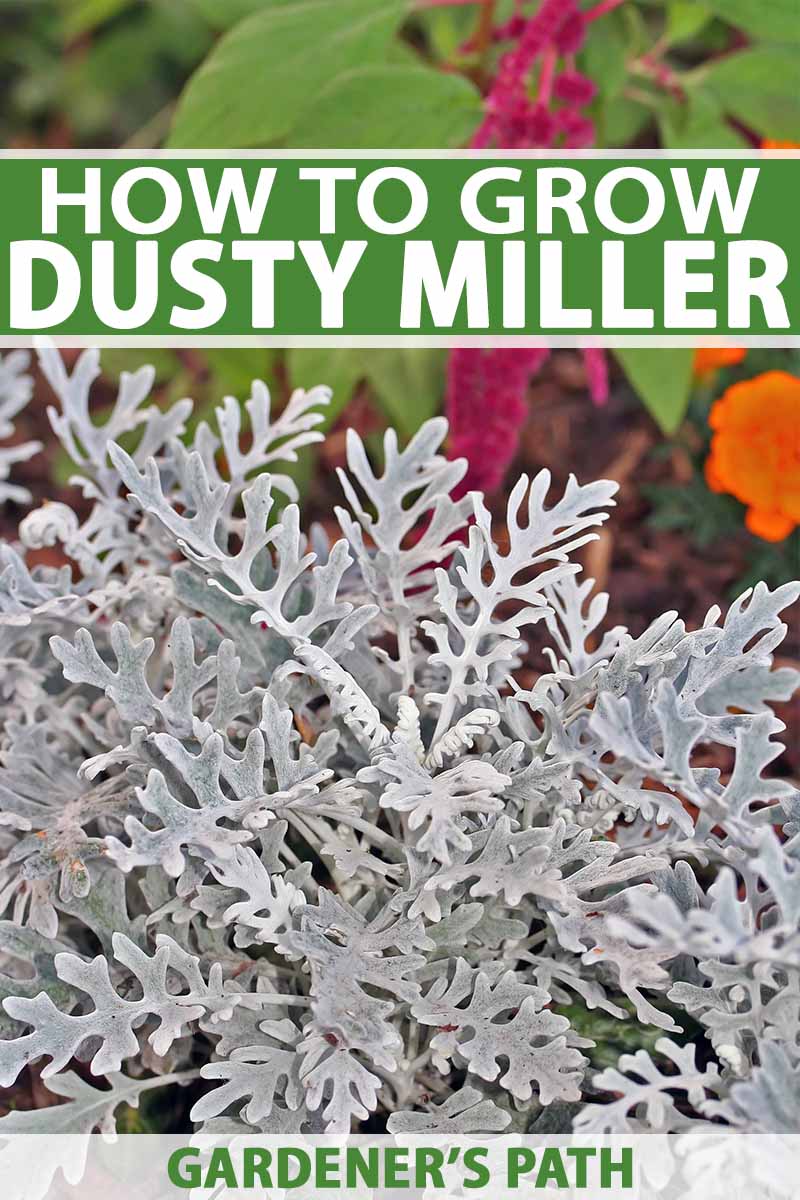
We link to vendors to help you find relevant products. If you buy from one of our links, we may earn a commission.
It’s an old favorite for a reason, and you’ll see why below. Here’s what’s ahead in this article:
How to Grow Dusty Miller
Let’s dig in!
A Classic Garden Annual
About fifty percent of my favorite plants are the ones that I grew and grew up with as a child. Marigolds, pansies, and black-eyed Susans are near the top, but good ol’ dusty miller takes the cake as my favorite.
I mean, look at that name – Dusty Miller? It’s impossible not to picture a wizened old man with a silvery beard and a squat build chuckling away in the garden. It’s a work of genius and art all by itself!
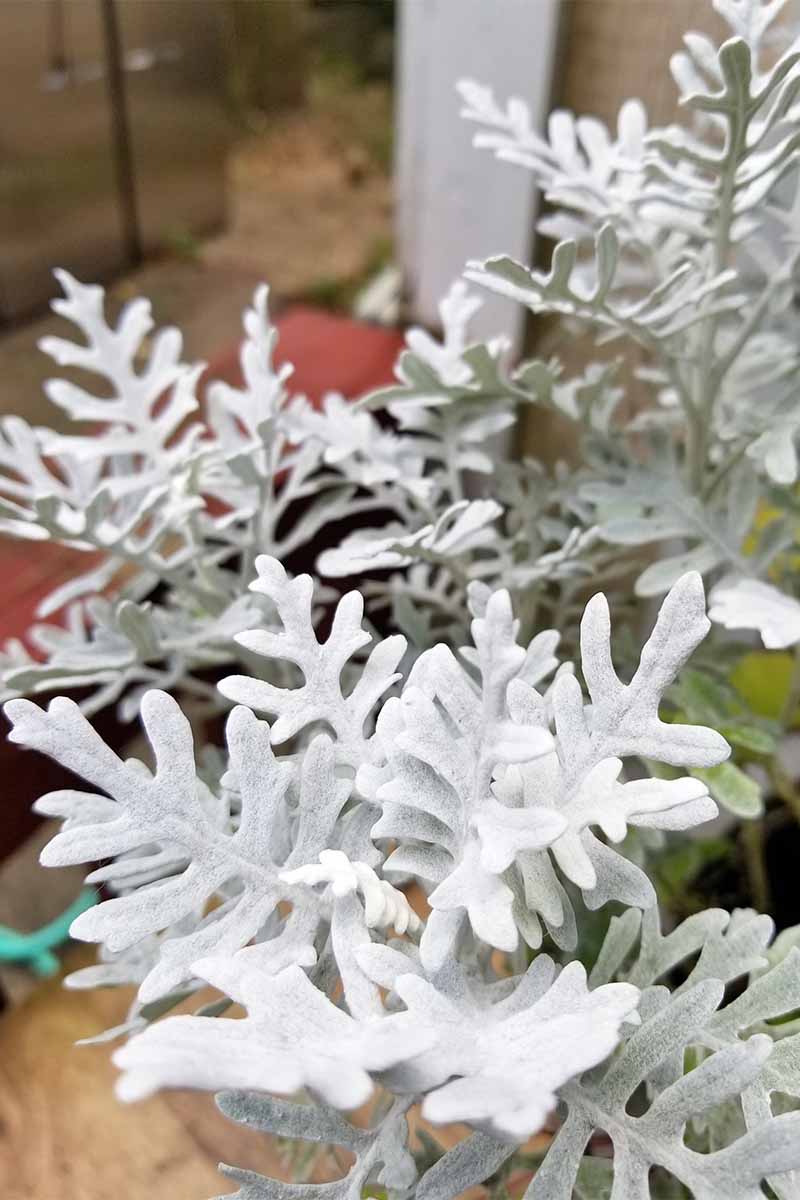
It doesn’t hurt that it was my uncle’s favorite too. He passed away when I was young, and my aunt planted flowers at his grave every year. When she was too old to do it, I took on the responsibility.
Imagine the incredible, sappy-happy joy that I felt when I discovered that the dusty miller I planted in the spring survived a hot and humid summer, interrupted by a cold and bitter winter, to push out new growth the following spring like it was nothing.
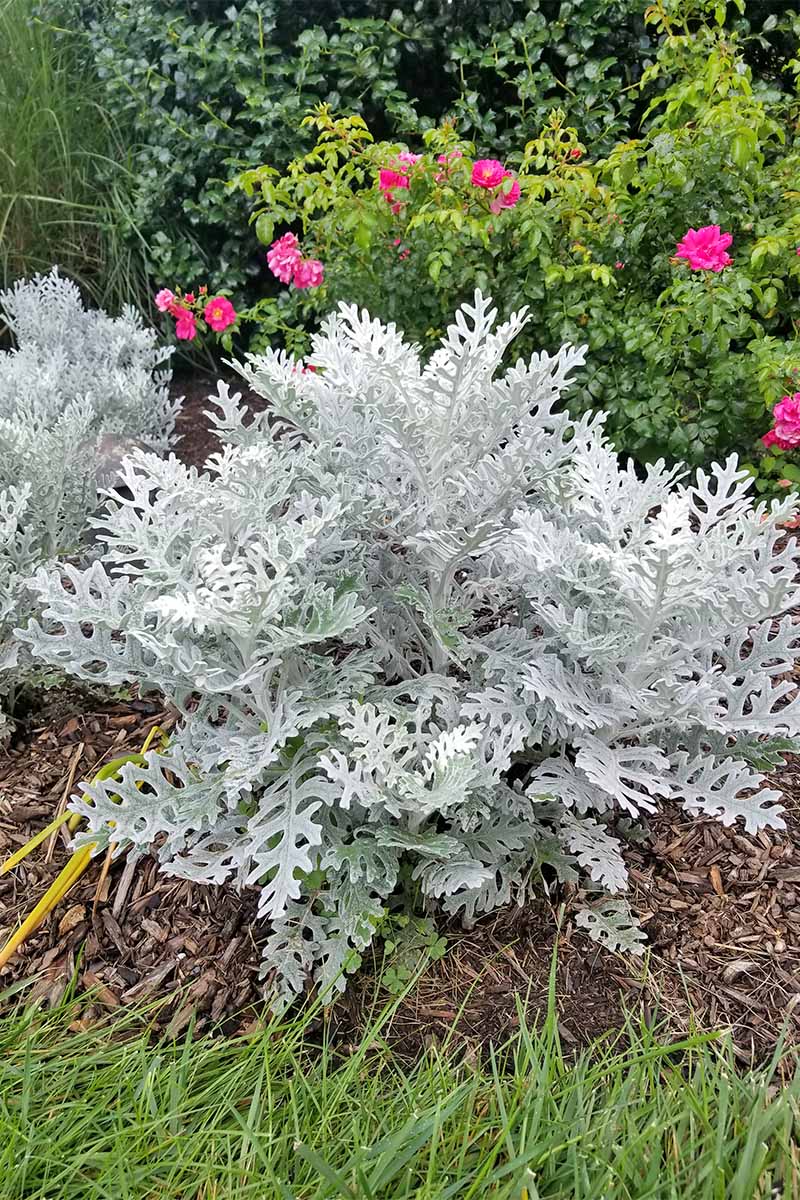
This might be common for those in USDA Hardiness Zones 8-10, where it is often grown as an herbaceous perennial. But in my neck of the woods, it’s practically taken for granted that this plant is an ornamental annual!
Since then, I often see dusty miller everywhere I go. But it’s usually relegated to the gardens of the older generations. And that’s a shame. It’s a beautiful foliage plant that is on the verge of a major resurgence in popularity, so you better keep on reading to learn everything you need to know about placing dusty miller in your garden.
Where Does Dusty Miller Shine?
As long as you plant dusty miller in environs where it will be happy, you’ll be happy with its display.
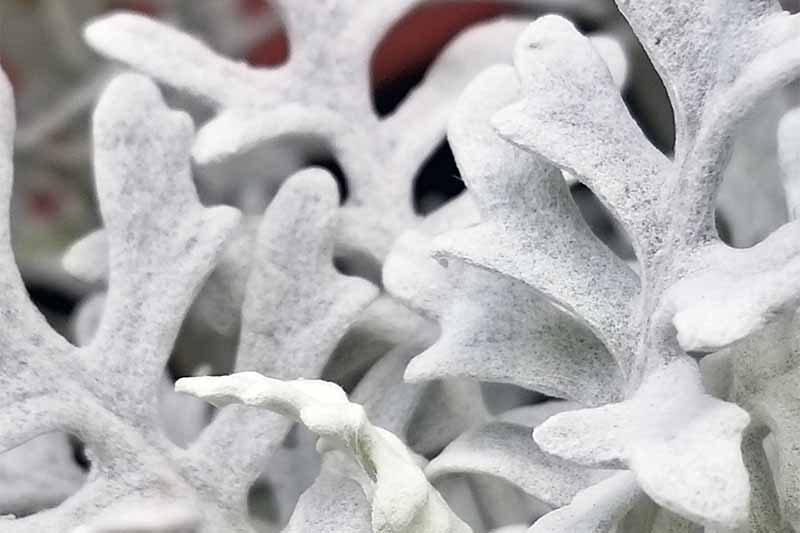
Formerly known botanically as Senecio cineraria, it has more recently been recategorized in the Jacobaea genus, part of the Asteraceae family. Native to areas of the Mediterranean, it’s also known as silver ragwort, and is not to be confused with other plants that go by the common name “dusty miller,” including Centaurea cineraria and Lychnis coronaria.
Like I described above, it is typically perennial in zones 8 to 10, but I’ve had luck in zone 5 keeping ol’ J. maritima alive through the winter.
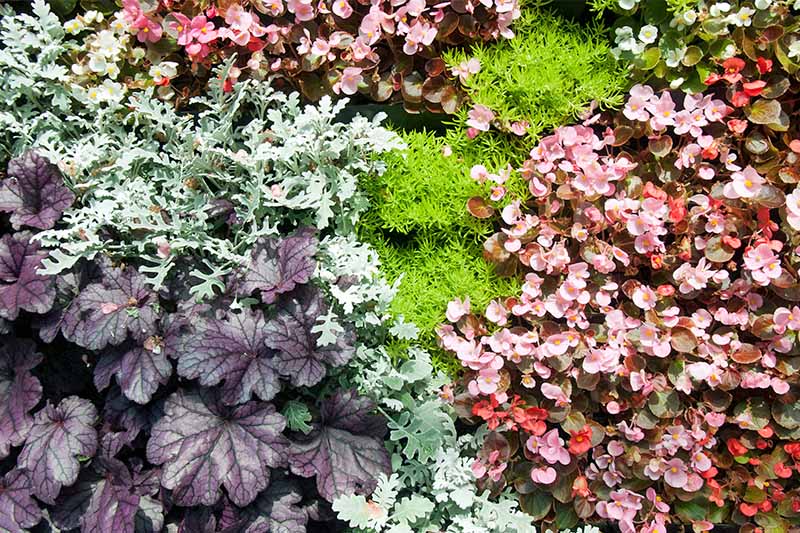
J. maritima thrives in sunny locations that have well-draining soil. It doesn’t require much water and is a great option for xeriscaping; in fact, too much water will spur a bout of root rot. And you don’t want that!
Luckily, J. maritima can thrive at most soil pH levels, and it can even tolerate some partial shade. If you grow yours in a less-than-sunny location, you will find that its iconic silvery sheen dissipates and is replaced by a gray-green color instead.

I’ve had great luck placing dusty miller in beds of wildflowers that thrive in similarly hot and dry conditions. The plant does very well in containers, and is one of my go-to options for adding some contrast with otherwise bright colors. It pairs especially well with ornamental grasses.
Even if it’s primarily a matter of personal taste, dusty miller pairs very well with white flowers too (especially Proven Winners’ ‘Diamond Dust’ euphorbia variety) by softening the complementary white shades. I admit that I try to squeeze dusty miller into every garden and container I can, but there’s a reason for that!
It Works Almost Anywhere
The silver sheen is subtle and not distracting, hardly an eye-catching piece of foliage, but that’s kind of the point. When you are designing your containerized plants, adding a more subtle plant to the mix works wonders.
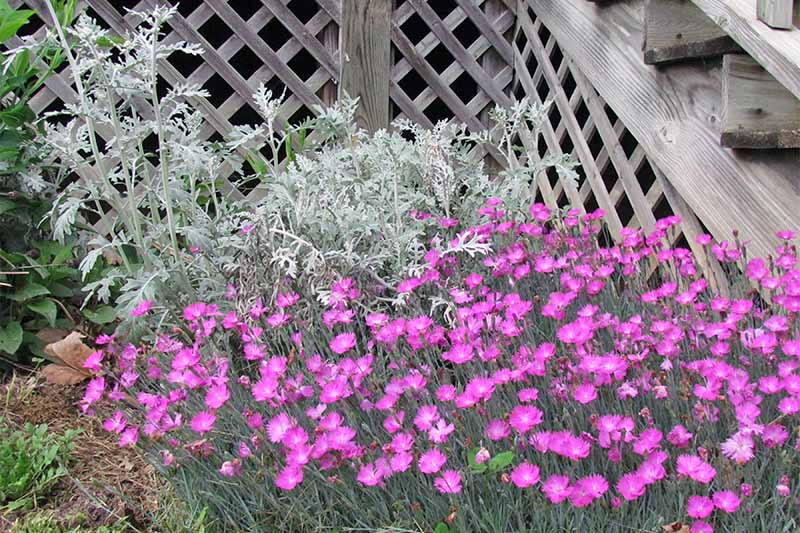
There is no shortage of plants you’ll encounter that are flashy and screaming for attention, and all the while humble dusty miller is happy to provide some contrast and textural variation.
A border of J. maritima adds a soft-hued contrast to other foliage, and helps to make colorful perennials and annuals really pop.
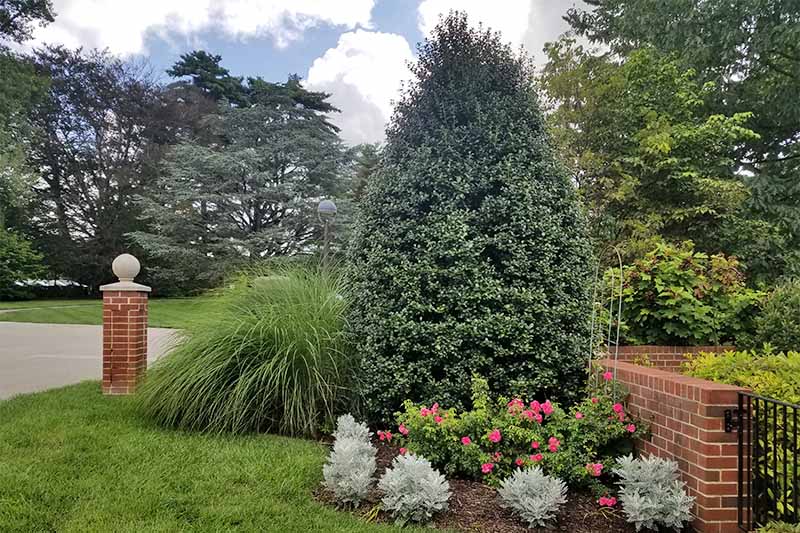
The beaches of Cape Cod are strewn with J. maritima, and it presents the perfect conditions for the plant – hot and sunny, mostly dry, with well-drained soil. If you’ve got sandy soil where nothing grows, J. maritima is for you!
Just yesterday, I was walking the dog and noticed a very interesting container design. It incorporated cactus, ferns, and dusty miller all in one. I loved this unique grouping right away, partially because it demonstrates the variability of J. maritima.
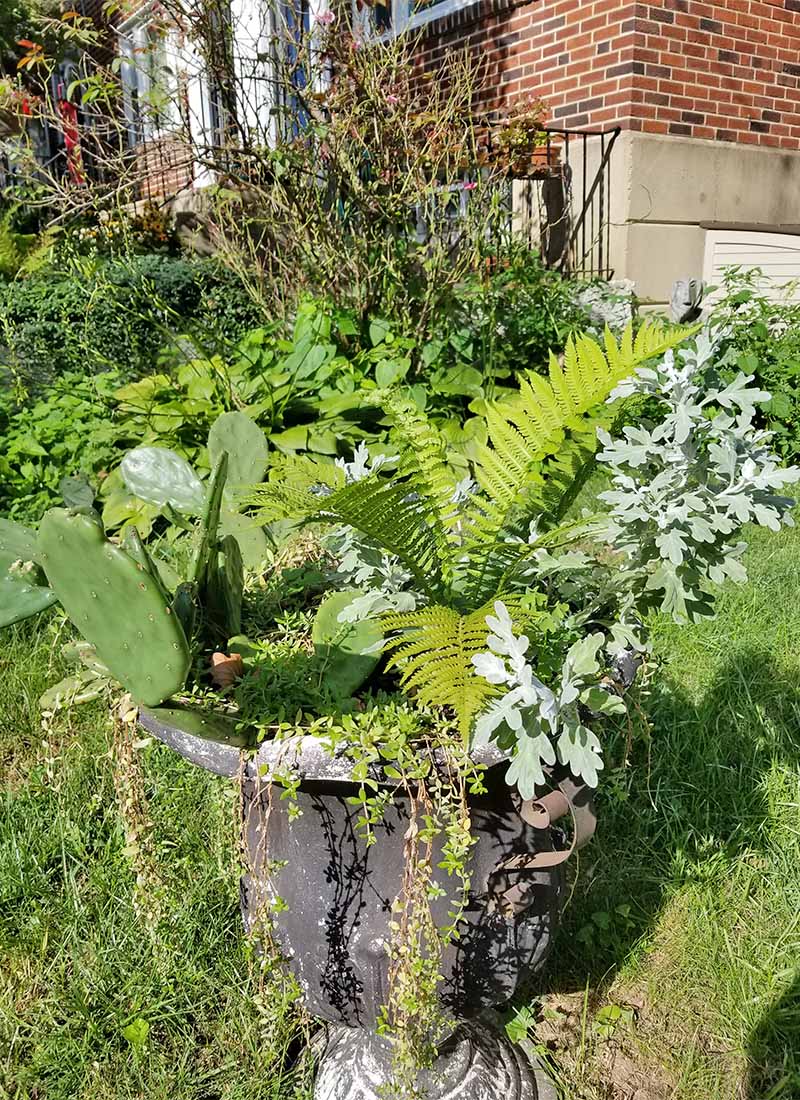
Keep in mind that in order to make this mix work, hidden inner containers were likely used to accommodate the greater hydration needs of the ferns than that of the desert plants.
Pests and Problems
Will you struggle to battle these if you add this plant to your outdoor space? Hardly!
Dusty miller is resistant to almost every bug, disease, and trouble you’ll find in the garden. This is at least in part because it thrives in hot and dry conditions where most troublemakers don’t reach.
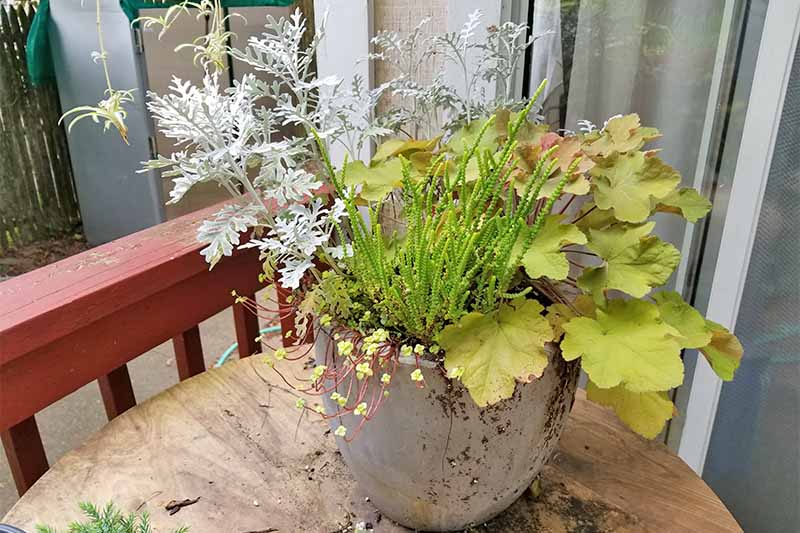
It can suffer from rust infections, but it makes up for for this possibility by being largely deer resistant. The biggest issue you can encounter is typically root rot, but by planting J. maritima in the right location, this won’t be an issue.
If you grow this plant in shadier conditions, it tends to become leggy and stretched out, in an attempt to reach for more sunlight. I’m growing a few plants in a part-shade container in my backyard, and they are a little stretched and funny looking… but with the right plant pairings, that leggy growth is more of a positive than a detriment.

Although dusty miller produces a lovely yellow flower, most gardeners tend to find it insignificant and less than worthwhile. You can cut the flower stalks down when they form, or you can let the plant do what it wants to do and enjoy a bit of yellow playing off those silvery hues!
Besides Planting Plugs, How Can I Grow Silver Ragwort?
Many times, you’ll find silver ragwort sold in 6-packs at the garden center. This is my preferred method for growing it. I love to start plants from seed, but J. maritima is one of the few where I prefer instant gratification.
If you’re inclined to try starting seeds, you should start them indoors about six weeks before the last frost date, or you can sow them directly to your garden about two weeks before the last freeze date. They’ll stand up to a bit of overcrowding, so you don’t need to thin them out too diligently.

Are you a fan of cuttings? Even if you’re not, I encourage you to give it a shot!
Your silver ragwort plants are great for starting cuttings. Find a piece that has become a bit woody and snip it from the parent plant.
Start cuttings in good-quality potting mix, and keep them watered. A rooting hormone can speed up the process and produce more reliable results.

Garden Safe TakeRoot Rooting Hormone, available on Amazon
Remember to snip those flowers if they have grown from your cuttings, to stimulate root and leaf development. This isn’t critical when the plants are already established in the garden, but it can be an important factor when considering J. maritima’s energy expenditure if you are attempting to start new plants from cuttings with strong roots.
Which Types of Silver Ragwort Are Worth Trying? (And Where to Buy Them)
Well, if you ask me, they all are! Your best bet is to find plants at your local nursery or garden center. Growing from seed, as I mentioned above, can produce unexpected results since this species not true to seed, so growing from starts that already have the qualities that you’re looking for is the surest path to victory.
‘Silverdust’ Seeds, available from True Leaf Market
But, if you’re willing to give it a shot and want to start from seed, I recommend the ‘Silverdust’ cultivar. Some types of silver ragwort are marketed for their stronger or more intense foliage, but ‘Silverdust’ is ideal for a strong grower that doesn’t sing with too loud of a voice in the garden.

‘Silverdust’ Live Starter Plant
‘Silverdust’ is also available on Amazon as a live plant that you might like to try.
‘Cirrus’ Seeds, available from True Leaf Market
On the other hand, the ‘Cirrus’ cultivar is intentionally grown for a stronger, bolder silver foliage. This is quite attractive to add to a garden with other silver hues (some thyme varieties and eucalyptus come to mind), and offers a more pronounced appearance.
Goodbye, Mister Miller
The best way to see if J. maritima works in your garden is to add it in there! I promise that if you have the right conditions for it to thrive, you’ll be delighted that you introduced it to the menagerie you have growing already.
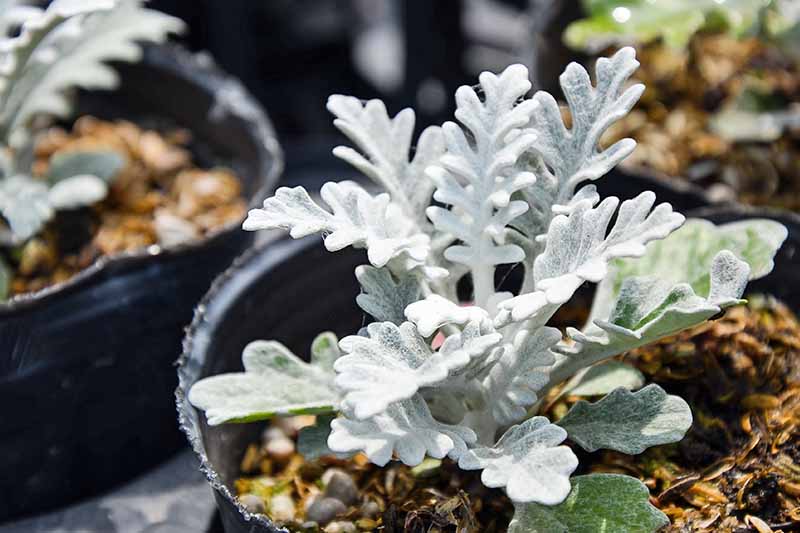
For more information on other plants that love hot and dry conditions, read our guide on black-eyed Susans and another favorite, yarrow.
Thanks so much for reading, and happy gardening! Please drop us a comment below, and don’t hesitate to let us know if you have any questions.
Photos by Matt Suwak © Ask the Experts, LLC. ALL RIGHTS RESERVED. See our TOS for more details. Product photos via Garden Safe, Orsana, and True Leaf Market. Uncredited photos: Shutterstock. With additional writing and editing by Allison Sidhu.
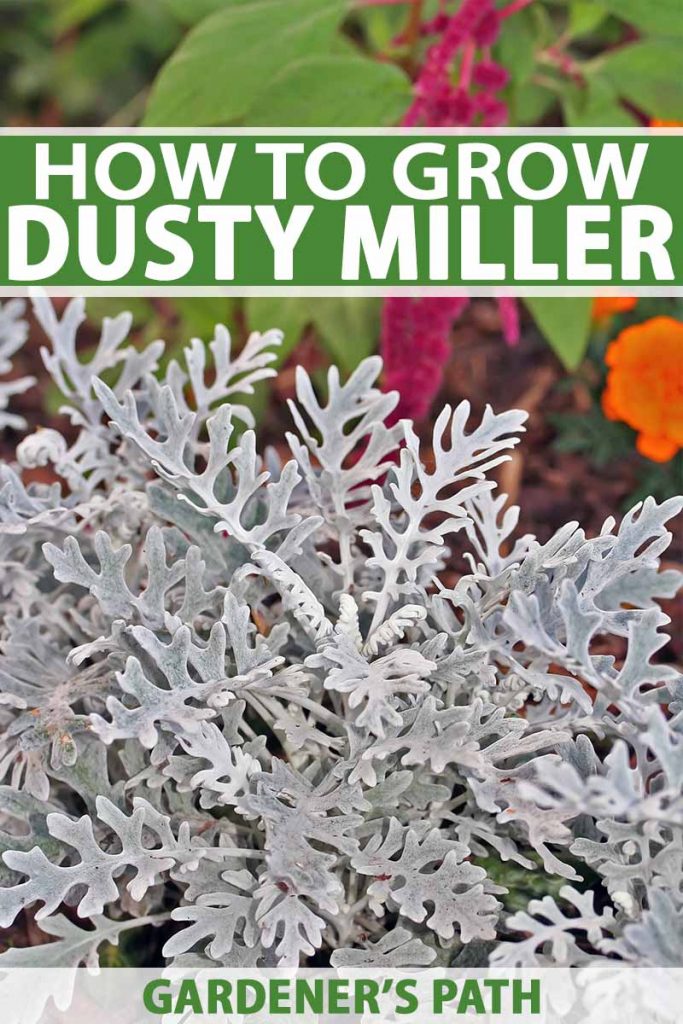
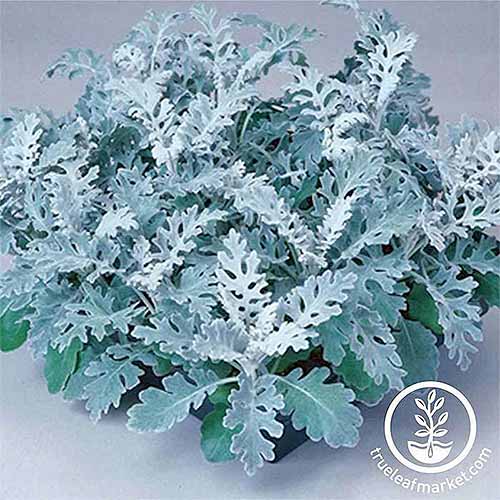
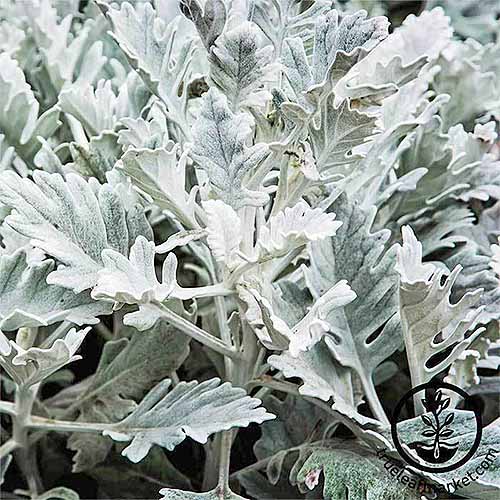
This ghostly white plant is eerily beautiful. I have been looking for a unique color to add to my garden and I think I just found a winner. Thanks so much for sharing this!
Hey Donna, thanks for taking the time to leave a message! “Eerily beautiful” is a perfect description of dusty miller, I like that. It looks nice in the moonlight too! Glad you enjoyed it, thanks again!
Hello…born City girl myself but now that I do not work at age 70 I’m so enjoying my very large Suburban yard and Dusty Miller and the like are my favorite. You live a good life! Be well Lee
Hi- I am interested in getting the plant in this article that I read on Pinterest. I live in Australia and I am wondering if I can get it here or not. I am in love with it very much, and would love to get some for my veranda.
I would appreciate it if you could please let me know if I have a chance of getting the plants here in Qld, Australia. I hope that I hear from you soon!
Thanks heaps,
Debra
Hi Debra, Thanks for your question- we’re so glad you found our article on Pinterest! You can absolutely grow dusty miller as an annual in Queensland. This is a big region, in an area comparable to USDA Hardiness Zones ranging from 2 to 6, but I’m unable to pinpoint your growing zone any more closely without more information. Regardless, though your location probably isn’t warm enough to overwinter this plant for year-round outdoor growth as a perennial, you’ll do well (like many in the US do) refreshing your veranda with new plants each spring. It makes such a lovely accent,… Read more »
why don’t they grow yellow flowers on them anymore?
I have had great success in having my dusty millers as perennials even though I’m located in zone 6a, 6b.
The way I am able to keep them through our tough winters is to mulch them heavily in the fall.
The only pests that I’ve encountered are bunnies. They like to chew the new growth off in the springtime. I find it odd since they don’t eat the leaves, instead, they chew them off the plant and leave them lay.
Hi there, does anyone know if it can regrow next year in Winnipeg and how
Thank you very much for this informative article. Do you have any pruning advice?
If I’m overwintering my millers I wait until new growth emerges in mid-spring before removing any of last year’s tired-looking growth. If you’re interested in pruning the plant in the growing season, I have methods of control, but I recommend letting the plant grow freely since most varieties don’t grow to gargantuan sizes and rarely overcrowd other plants. If you want the dusty miller to grow big and free, perhaps as a planting in a garden bed, I’ll remove only the largest leaves at the base of the plant if they start to grow leggy and take a beating. Mechanical… Read more »
my dusty miller same leaf but has mauve flowers like a miniture scotch thistle I am in Australia
I’ve got forty of these (Silver Dust) that I started from seed ready to go out–and I thoroughly enjoyed reading your article about them. They’ve always been a personal favorite of mine, too. I have a row of lilies across the front of my house that I have a love/hate relationship with (I love them when they are blooming and hate how weedy they look the rest of the time), and I think I’ll interplant the dusty millers with them. Thanks again for the enjoyable read!
Thanks for reading, Sherry, and I think we stand on common ground regarding lilies!
Can you save seed from the yellow flowers on a dusty miller to start new plants?? I live in NC and my mother has always been surprised they come back year after year. I love having the silver tone in the garden and would love to do something with those seeds though… Michelle
Hi Michelle –
If seed heads form, pick them once they turn brown. Rub them between your thumb and index finger to release the tiny seeds into a glass jar with a lid. Cultivated varieties often do not form seed pods, or they produce sterile seeds. However, there’s no harm in giving it a try. Save the seeds to plant next spring.
Our silver bullet plants have become brown and ugly. We live along the coast of NC and we have irrigation in the terrace they are located in. HELP…should we just drastically trim them back?
Thank you for the great information! I have a dusty miller that I brought home from the beach actually. I had no idea what it was, but I knew it was beautiful. The beach was full of them, so I wiggled one out of the sand/rocks, brought it home and popped it in a cup of water. It’s given me many cuttings, and made many babies. But I never really knew how to care for it- until now!! Thank you for passing on your love of dusty millers, I know it will be a staple in my home from now… Read more »
You’re welcome Nicole!